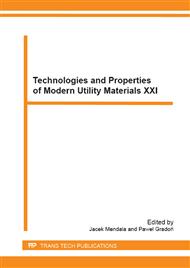p.191
p.195
p.201
p.205
p.211
p.215
p.221
p.225
p.229
Non-Metallic Inclusions in Castings Made of Nickel-Base Superalloys
Abstract:
The paper presents investigations concerning causes of non-metallic inclusions forming in castings made of nickel-base superalloys. The most common reason of inclusions forming is erosion and thermal decomposition of crucibles and molds by the action of liquid alloy. In case of superalloys containing reactive elements (Hf), many reactions at the alloy-crucible and alloy-mold interfaces take place.
Info:
Periodical:
Pages:
211-214
Citation:
Online since:
December 2013
Authors:
Keywords:
Price:
Сopyright:
© 2014 Trans Tech Publications Ltd. All Rights Reserved
Share:
Citation:


